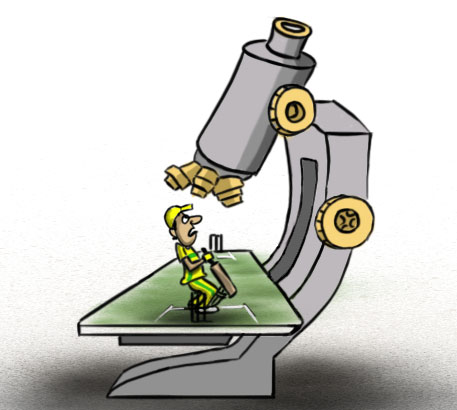 The Gentleman's game has its origins in the 16th century. In the five centuries since, the sport has advanced to different levels. From the first recorded International between Canada and the United States to the latest Champions Trophy matches, the game has seen a plethora of new inventions, many of which have enriched the lives of viewers and the support staff.
The Gentleman's game has its origins in the 16th century. In the five centuries since, the sport has advanced to different levels. From the first recorded International between Canada and the United States to the latest Champions Trophy matches, the game has seen a plethora of new inventions, many of which have enriched the lives of viewers and the support staff.
In the modern day game, analytics has become an essential part and a major factor in deciding a team's success. Technological developments have happened in every field and it has had a huge impact on the game as well. Due credit must be given to the International Cricket Council for incorporating modern technologies.
Technology helps the players to improve themselves as it helps them focus on the areas where they need to improve. It also helps the skippers in devising tactics. Technology has made life easier for the umpires to make an accurate decision. Let's take a look at the technological advancements in the beautiful game we admire.
TV Umpire
Before 1992, all the decisions pertaining to what was happening on the field was decided by the two on-field umpires. The Third Umpire, also known as the TV Umpire came into play in the first Test between India and South Africa in November 1992. The TV Umpire has television replays to make his decision and comes into play when the on-field umpires require his help.
Previously, it used to be lights, like the ones in the traffic signals, used to decide the fate of the batsman, with red signalling the end of the batsman's innings, whereas the green light signalling the batsman has survived the appeal. Third Umpires since then have been used whenever the on-field umpires have any doubts regarding any appeals. Though one can't term this as a technological advancement, TV Umpires have certainly changed the game.
Speed Gun
During the Joel Garner era, there was no precise equipment to calculate the pace of the bowlers. It was only in 1999 when Cricket got introduced to the concept of Speed Gun which accurately measured the speed of the ball from one end of the pitch to the other. The device relays a beam from the radar head to detect movement across the pitch.
Stump Mic and Camera
Attached to the stumps, the mic and camera gave the viewers an on-field experience, on how it feels to be in the centre of the stadium. It is vertically aligned in the hollow middle stump through a small window on the side of the stump via a mirror. The mic is used to receive the sound waves and helps the umpire whilst taking decisions when the batsman nicks the ball.
Edge detection
Often called snickometer, and in its modern form as ultra edge, this technology is used to tell whether the ball has touched the bat en route to the fielder. Invented in the mid-90s, Snicko produce a disturbance in the graph when the leather of the ball touches the bat or any other part of the batsman. The shape of the frequency helps the third umpire in making a conclusive decision.
HotSpot
HotSpot came into play after the Snickometer was reportedly considered not accurate enough. This technology uses infra-red imaging system and shows a bright spot where contact friction from the ball has elevated the local temperature. It uses camera on both the ends of the ground and provides information based on the heat friction generated by a collision.
Ball Tracking System or Hawkeye
Hawkeye was invented in 2001 to show the trajectory of the ball once delivered from the bowlers' hand. This technology is vastly used in major outdoor sports. It uses cameras which are aligned under the stadium roofs and generates a three-dimensional representation of the trajectory of the ball. It is solely used to track the trajectory and is used in judging LBW decisions.
Decision Review System (DRS)
Decision Review System is the modern day method for correcting or reviewing the on-field umpire's call. The DRS takes into account the Snickometer, Hotspot and Hawkeye whilst providing conclusive decision whether the decision stands or not.
Ball Spin RPM
Though this technology didn't take off as expected, it used highly incisive cameras to track the rotations of the ball once delivered by the bowler. It was firstly used in the 2013 Ashes series.
LED Stumps and Bails
Though an expensive technology, LED Bails are used to helping the umpires make a precise decision when it comes to decisions regarding run-outs. The bail glows when it is dealt with an impact. It has a sensor, a microprocessor and a low-voltage battery.
Chips in Bat
This is the latest technology which has been incorporated in the ongoing Champions Trophy tournament. These chips are installed in the bat so as to measure the angle, the bat-speed for various analysis purposes. They are inserted in the handles of the bat to study the motion of the same.
Technology has helped the game vastly and the game is becoming more 'smarter'. These new innovations have vastly been effective and serve as a treat for the viewers. They also help in analysing various nuances of the game.
Fast. Lite. Innovative. Shareable. Download our HW Cricket App, for Android and iOS!